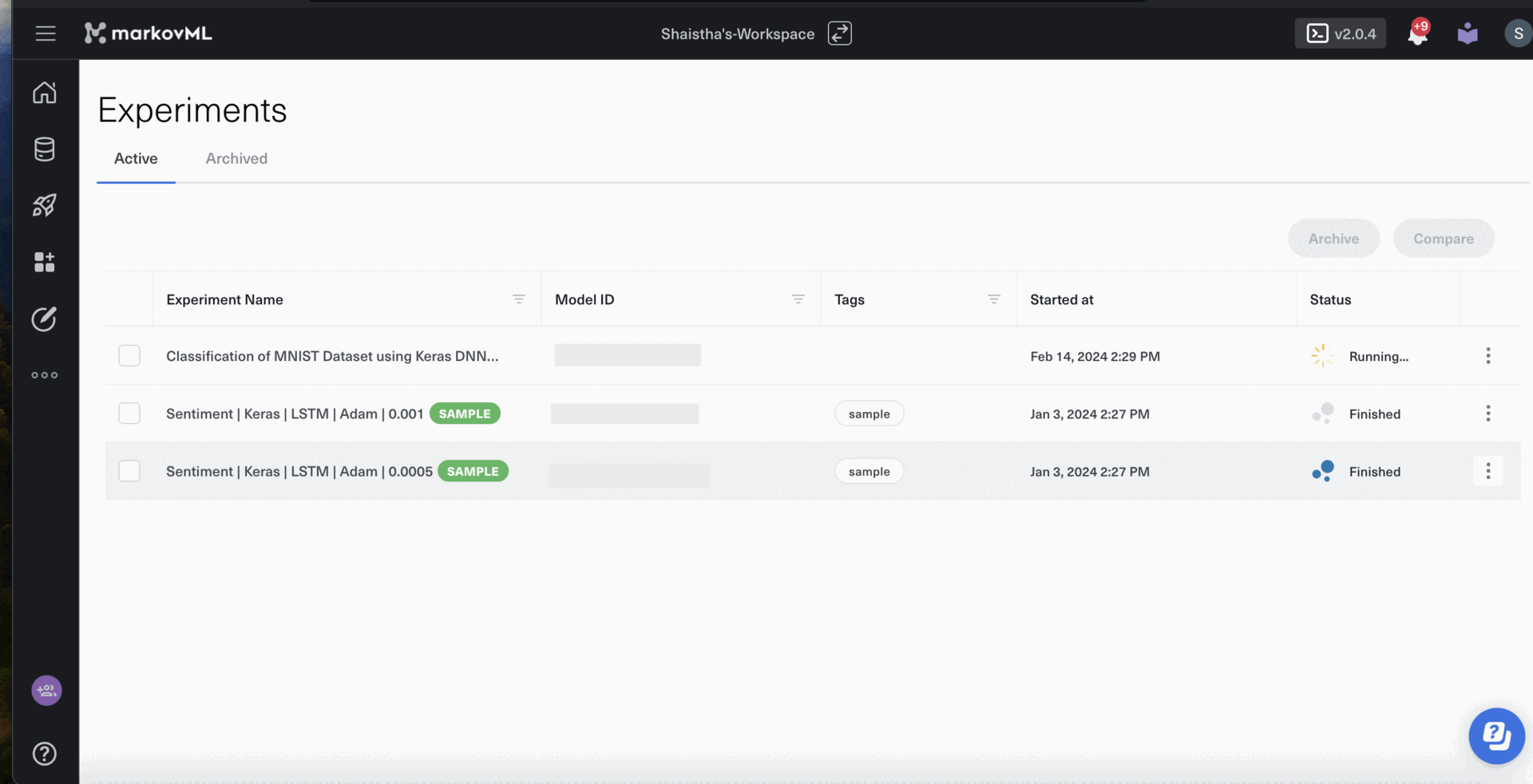Model Experiments
Track your model training experiments by recording hyper-parameters and metrics like loss and accuracy.
MarkovML Experiments
Model training is an extensive process that involves cycles of tuning hyperparameters and understanding how changes impact the convergence of your models, accuracy against the validation set, system resource utilization, etc. Understanding how a model trains against a set of hyperparameters is crucial for optimizing experimentation results.
MarkovML facilitates this process by allowing you to record your model training Experiments using the Markov SDK. You can then inspect metrics like loss and accuracy and system metrics like CPU and memory usage against the set of hyper-parameters provided.

How does it work?
MarkovML uses Recorder objects to record data into the MarkovML backend. Recording data from a model training experiment with MarkovML is a three-step process.
Step 1: Create an experiment recorder object and then register it with MarkovML backend.
Step 2: Add experiment records to the recorder to send to the MarkovML backend.
Step 3: Call finish on recorder object to signal to finish of a recording.
Integrations with ML Frameworks
To further simplify the process, MarkovML seamlessly integrates with many popular machine learning frameworks. Explore our Integrations page for more details.
What happens when the Experiments are recorded?
When an experiment recorder is instantiated, two new resources are created in MarkovML:
-
An Experiment: This represents the specific experimentation session, capturing details such as the experiment name, notes, hyperparameters, and any additional metadata.
-
A Model object: This acts as a placeholder to store a reference to the artifact generated during the training session. It serves as a pointer to the trained model, enabling easy access and retrieval in the future.
Once the recorder is instantiated, you can start sending the experimentation data to MarkovML, where it will be recorded and stored for further analysis and tracking. This streamlined process ensures that all experimentation activities are efficiently managed and documented within the MarkovML environment.
Updated 6 months ago
